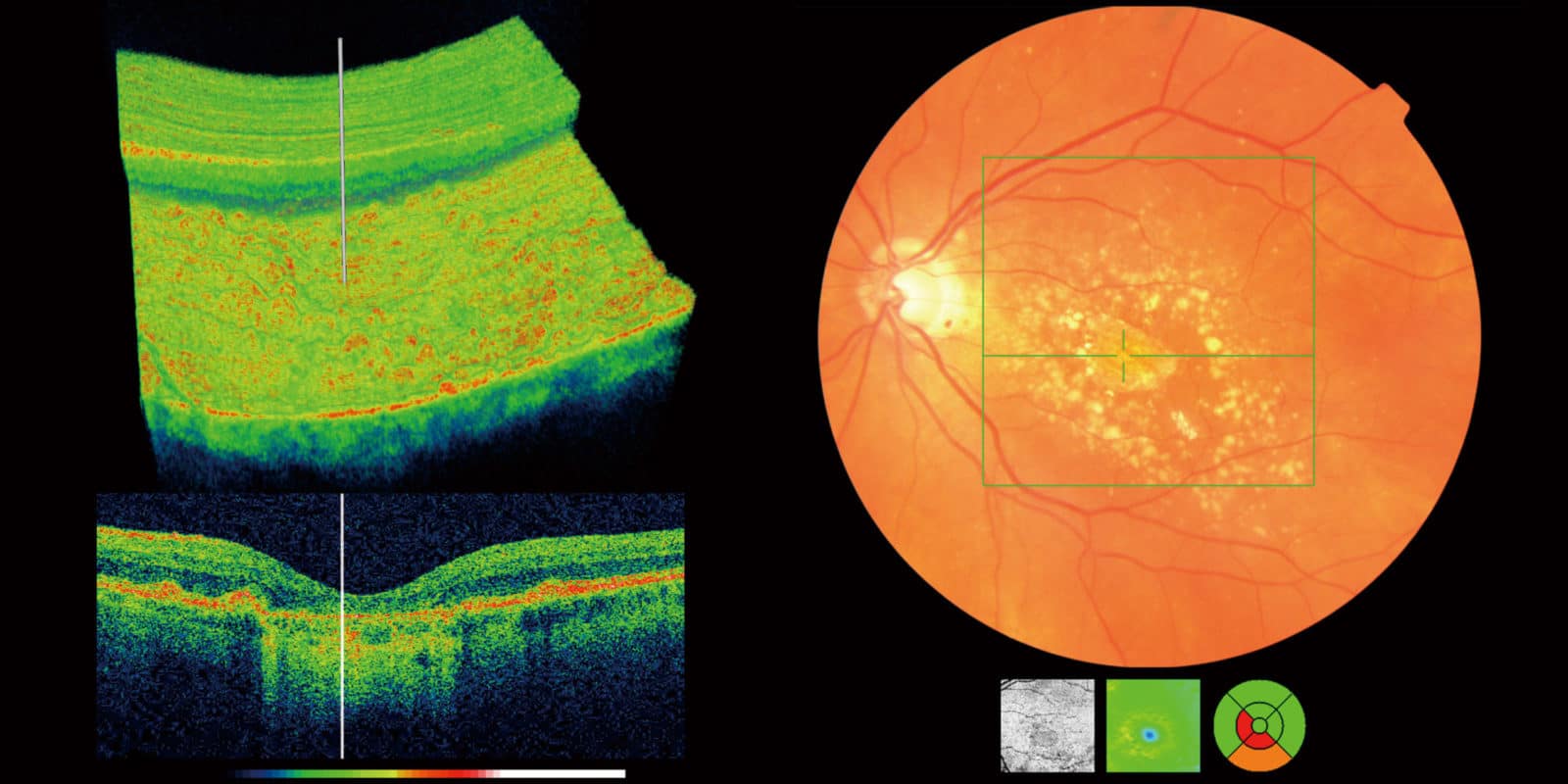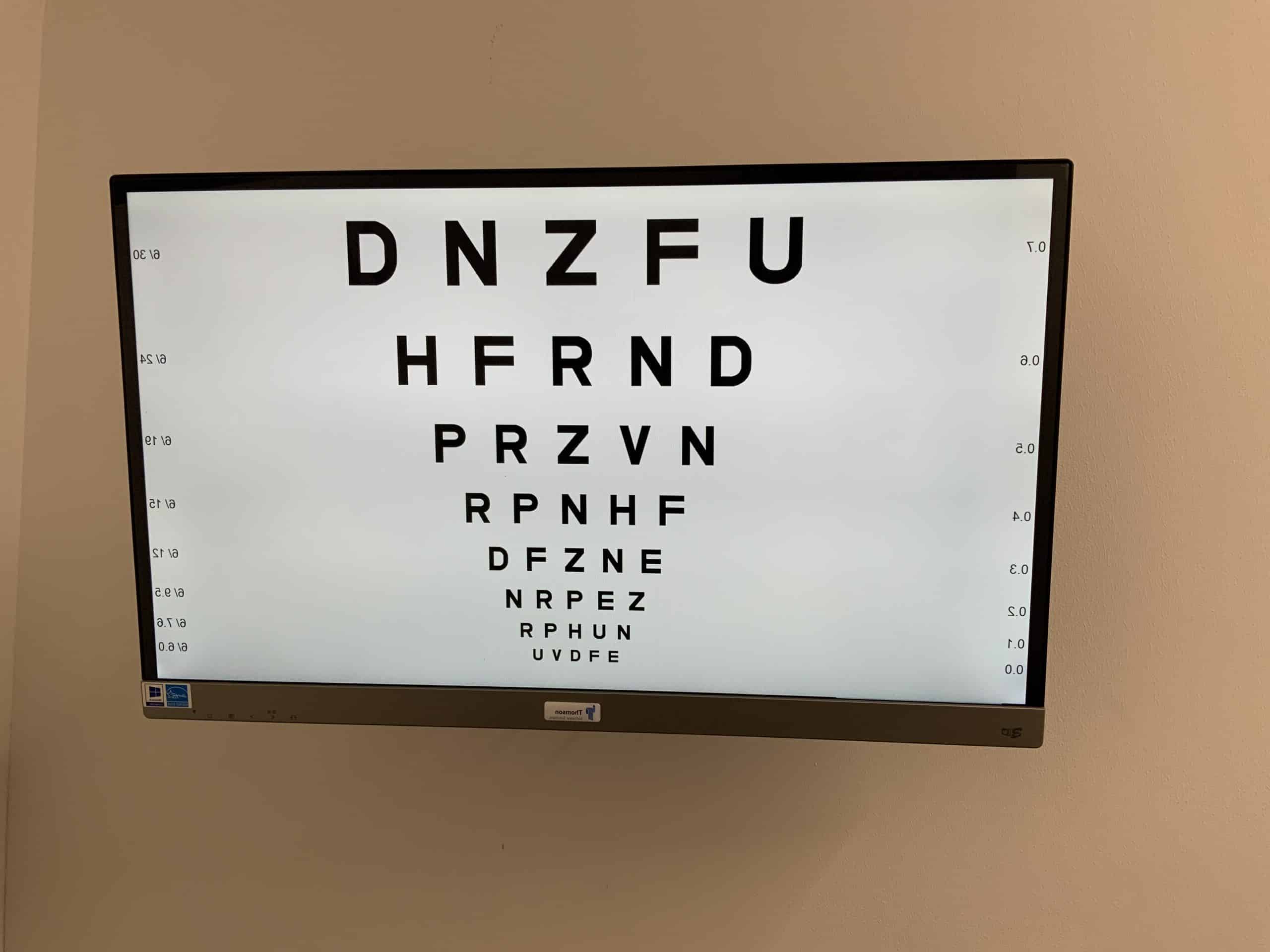02-12-23 By: Michael Stent
How much is an eye test?
The cost of an eye test will vary depending on which optician you visit whether it be a high street, chain optician, or an independent optician. Typically, a chain or multiple optician will range from £15-£35.
Whereas an independent optician will likely charge £40 – £100 for an eye test depending on the equipment they have, the length of time they spend with each patient during their eye test, and the experience of the optometrist.
Ace Eyewear: How much does an eye test cost?
Here at our Wimbledon optician, we charge £45 for our Standard Private Eye Examination and £75 for our Enhanced Eye Examination which includes a hospital-grade OCT scan.
This is higher than your traditional high street optician as rather than a 20-minute eye test we offer a deeper more enhanced eye test lasting over an hour. Where we can get to know our patients, and their concerns and understand their visual needs.
This time also allows us to explain to you what tests we are doing and why, along with explaining the results of tests like OCT scans so that you can have a better understanding of your eyes.
All in all, we aim to provide the most thorough, in-depth eye test that new patients to us have ever had and this is reflected in our glowing reviews from customers.
“This was the most thorough eye exam I’ve ever had. Rohina was quick to identify that other opticians had been supplying me with contact lenses that had the wrong curvature for my eye. The lenses she suggested made a huge difference” – Struan, Wimbledon
“The most thorough eye test I’ve ever had with Rohina who really helped me with some of the worries I was having. Everything was explained brilliantly and I left feeling calm” – Daniella, Southfields
“Brilliant eye test experience here, and incredible aftercare which really adds to the feeling of being a valued new customer. The eye test was very thorough, and the woman doing it was lovely and explained everything as she went along” – Heni, Wimbledon
“The eye test provided is the most extensive and results are explained in detail.
I am very happy with the quality of my glasses, I can clearly tell the difference from other experiences I had in the past” – Feli – Wimbledon
Should I include OCT with my eye test?
Yes, we would recommend having an OCT scan with every eye test but at the very minimum, we would recommend having it performed at least once as this will provide the optician with baseline measurements for your eyes which can then be referenced in the future if you present with problems with your eyes.

What do we check during your eye examination?
A comprehensive eye test involves the evaluation of various aspects of your eye health alongside your spectacle prescription. Here’s a list of what is commonly checked during an eye test:
Visual Symptoms Discussion:
Conversation about any visual discomfort, headaches, or other symptoms you may be currently experiencing. This is done through a detailed history at the beginning of your eye examination.
Visual Acuity:
Assessment of how well you can see letters on the Snellen chart. We can tell you if your vision is 20/20 although this is an American term the chart is positioned 20 feet away from the patient. In the UK we test patients with the chart 6 meters away so we use the term 6/6 to signify perfect vision.
Refraction:
Determine the appropriate prescription required for your spectacle lenses.

Ocular Muscle Balance & Binocular Vision:
Evaluation of how well your eyes move and work together at both distance and near vision. Which if detected would be resolved by either eye exercises or by prescribing a prism in your glasses.
Peripheral Vision Check:
Testing your ability to see objects outside your direct line of sight using a visual fields machine. Check that the patient doesn’t have any additional blind spots and that the eye-to-brain pathway is clear.
Colour Vision:
Identification of any colour deficiencies or colour perception issues, either congenital or due to the development of certain eye diseases. Colour vision is assessed using the Ishihara colour plates.
Intraocular Pressure:
We measure the pressure inside your eyes, this is the tension of the fluid inside your eye called the vitreous humor and is measured using a tonometer. Traditionally this is what patients would refer to as the “puff of air test” that would make many jump slightly back into their seats! Here at Ace Eyewear, we have invested in the latest i-care tonometer which is much more comfortable for our patients.
Pupil Response to Light:
Observation of how your pupils react to changes in light conditions. We are looking that they are equally reactive and round in both eyes.
Slit-Lamp Examination:
Detailed examination of the external & internal structures of your eye, including the lids, lashes, conjunctiva, cornea, iris, crystalline lens, and central and peripheral retina. Inspection for signs of eye diseases, such as cataracts, macular degeneration, and diabetic retinopathy.
Retinal Examination:
Examining the back of your eye, including the retina, optic nerve, and blood vessels using either Volk lenses or direct ophthalmoscopy. Looking for eye health stability in these measurements from your initial eye examination with us.
Assessment of Tear Film:
Evaluation for dry eyes by checking the quantity and quality of tears. This is assessed using a coloured dye called Flouroscien which if dry will fluoresce under a cobalt blue light. This test is painless and doesn’t affect your vision and the dye only lasts for a few minutes in your eyes.
Corneal Topography:
Mapping of the curvature of the cornea to assess its shape and detect irregularities such as Keratoconus. This is also used in contact lens fittings.
Book your appointment



